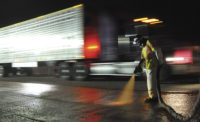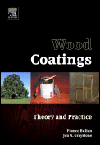Challenge
As part of a five-year project, the task of protecting the existing Blackfriars rail bridge and the new station that runs along its length presented a specific challenge in that a common protective coating system for old and new steelwork was preferred.
With the River Thames below, inherent issues of dampness and humidity meant that the choice of coating would be of particular importance, because Network Rail specified a minimum service life of 25 years to first major maintenance.
The roof of the new station was covered with 4,400 photovoltaic panels, providing up to half of the energy needed to run the railway station below and making it the world's largest solar-powered bridge.
First Capital Connect, which manages Blackfriars Station, expects the panels to cut the station’s carbon emissions by an estimated 511 tonnes a year, further reducing the carbon footprint of its train routes to the south east of England. As a major advertisement for London's efforts to become a sustainable city, with tourists and workers viewing the landmark as they enter the capital, the project was of paramount importance.
Solution
Because of its success in the repainting of the Forth and Tay Rail bridges and all the new steelwork for Leeds station, a glass flake epoxy system was chosen. The main contractor, Balfour Beatty, selected the Severfield Group to supply and fabricate the steelwork for the new station and Pyeroy to repaint the existing bridge. Both sub-contractors selected Sherwin-Williams Protective & Marine Coatings EMEA as their preferred paint supplier.
The existing paintwork on the rail bridge was removed by abrasive blast-cleaning. The three-coat repainting system comprised; Metagard L574 Blast Primer at 25 um minimum dry film thickness (mdft), Epigrip M922 Glass Flake Epoxy Intermediate at 400 um mdft, and Resistex C137V2 Special Finish at 50 um mdft. A stripe coat of Epigrip M922 at 200 um mdft was applied between the first and second coats.
All the new steelwork that formed the station canopy and the entrance/ticket halls located at each end of the bridge were coated with the glass flake epoxy protective system. In total more than 60,000 square metres of new and old iron and steel was coated.
Summary
Originally developed to protect offshore structures from the severe marine environment in North Sea oil and gas applications, the epoxy glass flake resin system adapted well for this purpose.
The three-coat preventative maintenance coating system provides excellent adhesion and anti-corrosion properties, and acts as a powerful barrier against the harsh weather conditions.
This technology – used to complete the painting of the Forth Rail Bridge in 2001 to 2011 – has put glass flake epoxy-based systems at the forefront of bridge painting.
The benefits to customers using this system for the bridge and highways sector comes in terms of labour saving costs, lower energy usage and volumes of paint required. In addition, the higher volume solids coating system meant that fewer volatile organic compounds (VOCs) were emitted during the process.
Using glass flake technology to provide a thicker dry film in a single coat, the coating system can be modified to meet the requirements of the project in terms of cost effectiveness, application and finish. The selected paints typically consist of a thin film holding primer, an epoxy glass flake build coat and an acrylic urethane finish, as well as a stripe coat of epoxy glass flake.
Sherwin-Williams’ glass flake epoxy coatings now feature in a number of other large bridge and highway projects, including 47 bridges across the M6 Toll Road, the Royal Albert Bridge, the Forth Rail Bridge and the Tay Rail Bridge.





Report Abusive Comment